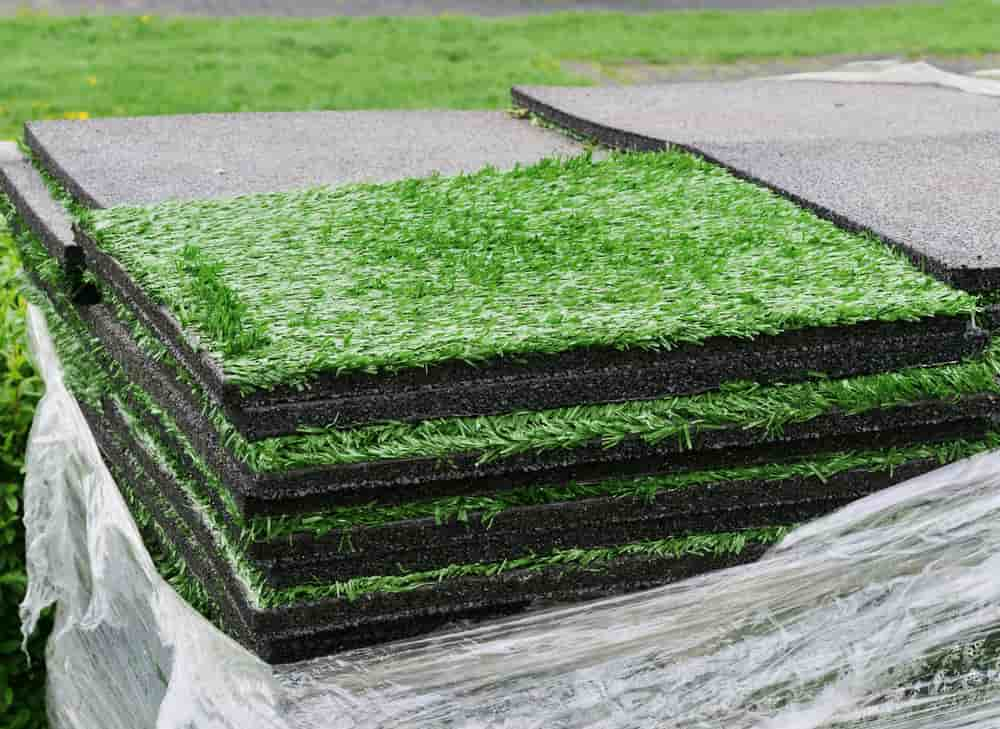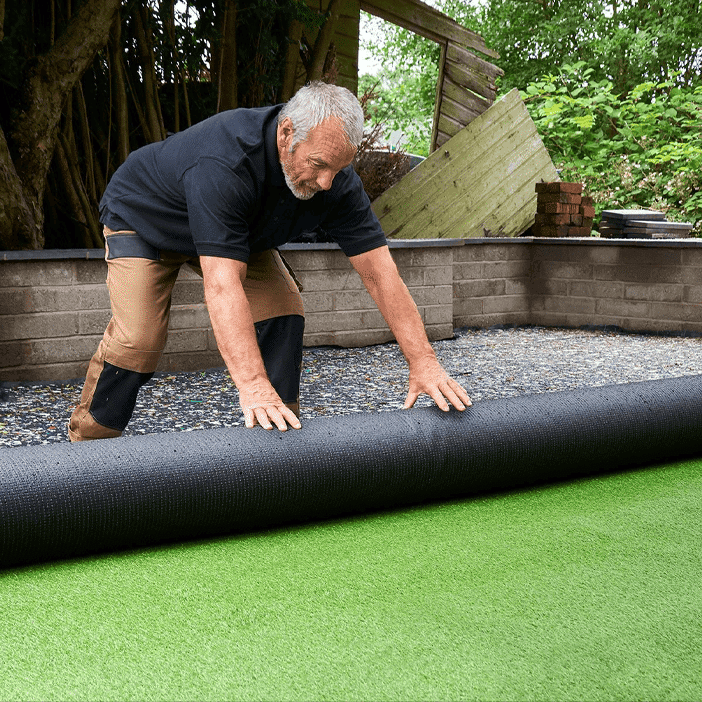Leading Phoenix Turf Companies Offering Premium Synthetic Lawn Products
Leading Phoenix Turf Companies Offering Premium Synthetic Lawn Products
Blog Article
See Why Homeowners Prefer Artificial Turf for Sustainable Landscaping Practices
As property owners increasingly prioritize sustainability in landscape design, artificial grass has actually emerged as a compelling option to typical turf. What stays to be discovered is the full range of advantages that fabricated turf can provide to home owners and the environment alike.
Water Conservation Conveniences
One of the most significant advantages of artificial turf is its role in water conservation. In contrast, man-made grass eliminates this demand completely, as it does not need irrigation.
Furthermore, the setup of synthetic grass can add to a more sustainable landscape. Property owners can dramatically decrease their water expenses, permitting reallocation of resources to other environmental initiatives or household usages. Furthermore, synthetic grass is made to withstand numerous climatic conditions without the demand for extra watering, making it a suitable option for areas dealing with water scarcity.
The ecological benefits expand beyond immediate water financial savings. By decreasing water intake, man-made turf aids to reduce the influences of climate adjustment, preserving essential environments that are threatened by too much water extraction. As lasting landscaping techniques acquire grip, artificial grass emerges as an accountable choice for house owners looking for to create eco-friendly outside rooms.
Reduced Maintenance Initiatives
Synthetic grass dramatically reduces maintenance efforts contrasted to typical turf lawns. With man-made yard, homeowners can get rid of the lengthy jobs related to natural landscaping, such as mowing, fertilizing, and weeding. This not just conserves beneficial time but likewise minimizes physical labor, making grass treatment obtainable for people of all ages.
One of the most noteworthy advantages is the absence of routine mowing. Standard grass require frequent trimming to maintain an aesthetically pleasing height, whereas synthetic grass remains consistently lush without the need for reducing. Additionally, homeowners no more require to use plant foods or pesticides, which are frequently required to maintain all-natural lawn healthy. This shift not only lightens the work yet likewise promotes a neater, much more uniform look year-round.
Furthermore, synthetic grass is resilient and resistant, needing marginal upkeep past occasional brushing and washing to eliminate particles. This ease of upkeep allows home owners to enjoy their outside spaces without the continuous fear of upkeep, giving more time for leisure and family members activities. Eventually, the lowered maintenance efforts connected with synthetic lawn make it an appealing option for those looking for a low-maintenance, aesthetically appealing landscape.

Environmental Influence Reduction
There is an expanding acknowledgment of the environmental advantages related to synthetic grass, especially in regards to water conservation and decreased chemical use. Conventional yards call for significant quantities of water, specifically in drought-prone regions, causing increased strain on neighborhood water sources. In contrast, synthetic grass eliminates the requirement for watering, considerably lowering water consumption and promoting sustainability.
Furthermore, standard grass maintenance typically includes the application of herbicides, fertilizers, and pesticides, which can contribute to soil and water contamination. Synthetic grass minimizes this ecological threat by calling for marginal maintenance and basically eliminating the need for hazardous chemicals. This not only improves soil health but also protects local ecosystems from toxic runoff.
Moreover, the manufacturing of natural lawn lawns commonly involves the use of nonrenewable fuel sources for trimming and landscaping devices, further adding to greenhouse gas emissions. By selecting artificial turf, property owners can substantially decrease their carbon footprint connected with grass treatment tasks.
Aesthetic Allure and Adaptability
In enhancement to its ecological advantages, man-made lawn offers substantial visual allure and versatility for landscaping. Home owners can attain a lush, blog green appearance year-round, getting rid of the seasonal variations generally related to natural turf. This constant visual not just improves the aesthetic allure of a residential or commercial property however likewise adds to a properly maintained and sleek appearance.
Moreover, synthetic grass is available in a variety of styles, shades, and appearances, permitting customization to match specific choices and style styles - Arizona turf. Whether made use of in property gardens, commercial spaces, or recreational locations, it can effortlessly integrate into varied landscaping designs, from modern-day minimal to lush exotic setups
The flexibility of synthetic grass prolongs beyond plain look; it can be installed in numerous places, including roofs, outdoor patios, and also indoor spaces, developing chances for distinct landscape design options. Furthermore, it is suitable for a variety of activities, from children's backyard to Visit Website pet-friendly atmospheres, providing performance without compromising design.
Eventually, the visual charm and versatility of fabricated grass make it an attractive option for homeowners seeking lasting landscaping options that do not sacrifice appeal for ecological responsibility.

Long-Term Cost Financial Savings
Among the most engaging advantages of synthetic grass is its possibility for long-lasting price savings. Unlike all-natural turf, which calls for regular maintenance-- consisting of mowing, watering, fertilizing, and bug control-- synthetic grass considerably lowers these ongoing costs. Homeowners can save a considerable quantity on water bills, particularly in areas where water scarcity is a pressing problem. The removal of lawn care solutions further contributes to monetary cost savings, as there is no demand for specialized devices or labor.
Furthermore, man-made grass has a life-span of 15 to 25 years, relying on its high quality and use. This longevity minimizes substitute prices, making it an extra cost-effective option over time. Moreover, the preliminary investment in synthetic grass can typically be recovered with the cost savings accumulated in time.
While the upfront price might seem greater contrasted to sod installation, the collective cost savings from decreased upkeep and water usage frequently outweigh these first expenses. Eventually, the adoption of synthetic grass not just promotes a lasting landscaping service but additionally provides house owners an economically smart option that aligns with lasting budgeting goals.
Conclusion
Fabricated lawn arises as an engaging option for sustainable landscaping, using substantial benefits in water preservation, reduced maintenance efforts, and decreased ecological impact. As neighborhoods progressively focus on ecologically friendly methods, the adoption of synthetic grass stands for a modern action toward accomplishing sustainable and durable landscapes.
In addition, artificial turf is designed to withstand different climatic problems without the demand for extra watering, making it an excellent selection for regions facing water scarcity. (Arizona turf)

Fabricated grass arises as a compelling alternative for sustainable landscape design, using significant benefits in water preservation, decreased upkeep efforts, and lessened environmental influence.
Report this page